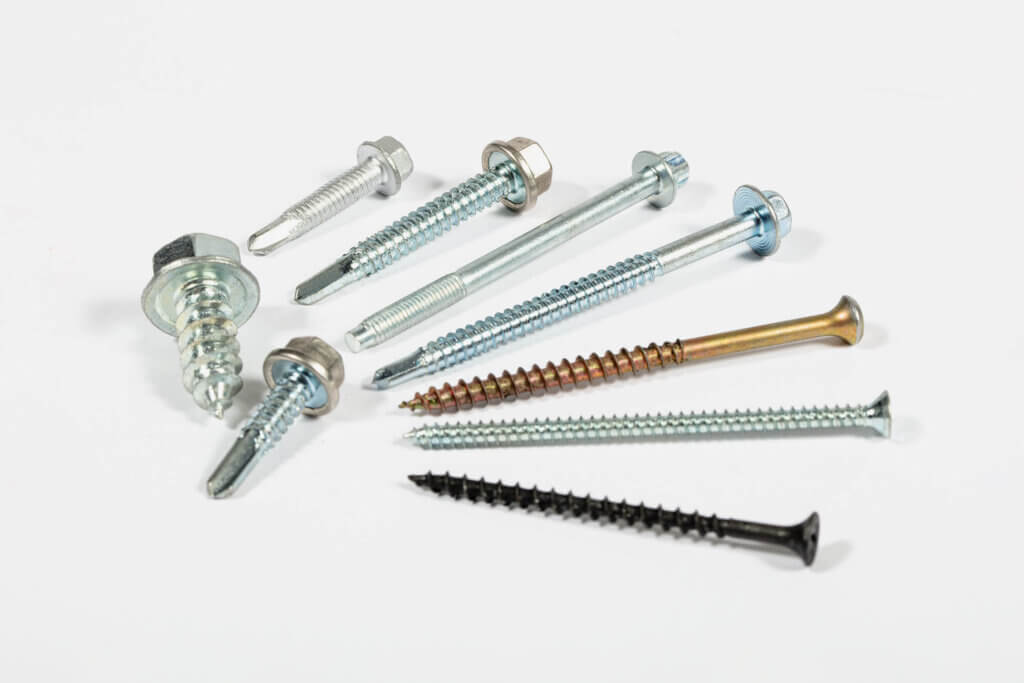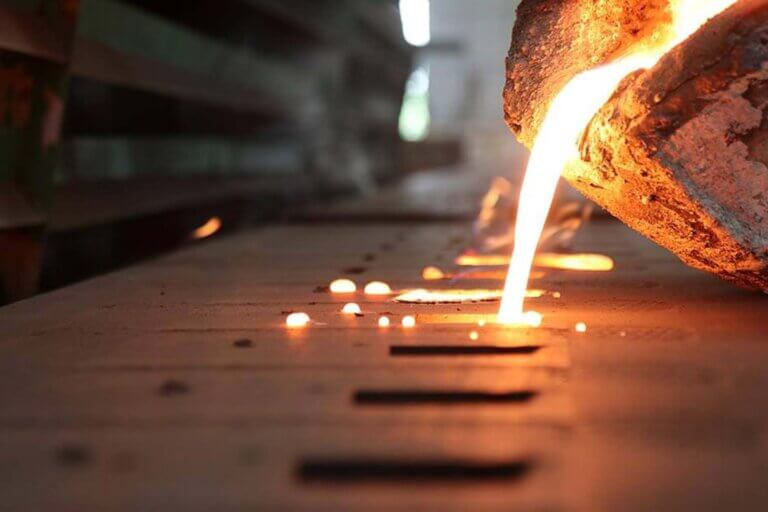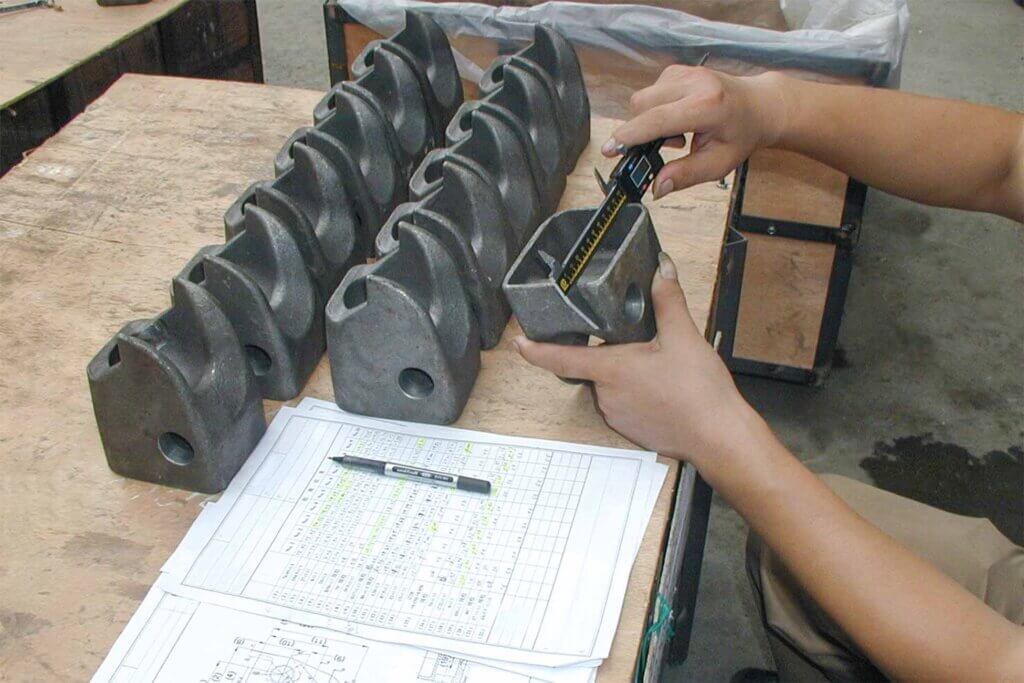

Gravity casting, also referred to as permanent mold casting, is a fundamental process in the manufacturing and metalworking industries, utilizes the force of gravity to fill a mold with molten metal, creating precise and complex parts with high-quality finishes.
This technique, a type of die casting, has a rich history, evolving from ancient metalworking practices to modern, sophisticated applications.
Table of Contents
The Gravity Casting Process Explained

The essence of gravity die casting lies in its process, which involves four key steps:
- Step 1: Initially, the mold is prepared and pre-heated made from “permanent” materials like metal.
- Step 2: The metal, melted to a precise temperature (between 700 °F and 2,500 °F), is then poured into the mold.
- Step 3: The force of gravity ensures the molten metal fills the mold cavity completely, capturing the intricate details and desired shape.
- Step 4: After cooling and solidification, the cast part is ejected from the mold, undergoing various post-processing techniques to meet the final specifications.
Advantages of Gravity Casting
Superior Quality and Precision
One of the most compelling advantages of gravity casting is its ability to produce parts with exceptional surface finishes and dimensional accuracy. This precision is especially crucial for complex shapes and designs, where every detail matters.
Cost-Effectiveness and Efficiency
Gravity casting stands out for its cost efficiency and material conservation, making it suitable for both short and large production runs. The process minimizes material waste and streamlines production, offering a balanced approach to quality and cost.
Gravity Casting Materials and Alloys
Overall, the properties of low-temperature metals make them well-suited for gravity die casting, offering advantages in terms of process efficiency, mold longevity, dimensional accuracy, and safety. Below are a few of the materials that The Federal Group specializes in:
- Aluminum
- Copper
- Iron
- Magnesium
- Zinc
Innovative Techniques in Gravity Casting
- Advanced Mold Design and Material: Innovation in mold design, including the integration of 3D printing technology, has revolutionized gravity casting. These advancements allow for quicker turnaround times and the production of molds that were once considered too complex or cost-prohibitive.
- Automation in Gravity Casting: The adoption of automation and robotics in gravity casting enhances precision and efficiency. Automated pouring systems and software for simulation and process optimization are pushing the boundaries of what’s possible in gravity casting, making it more reliable and scalable.
Applications of Gravity Casting in Various Industries

Gravity casting’s flexibility and precision make it indispensable across diverse sectors. In the fluid and gas industry, it’s used to create valve and compressor parts. The aerospace sector relies on gravity casting for critical components that require utmost precision and strength.
Beyond these industries, gravity casting contributes to the production of consumer goods and household items like stove grates and covers.
Frequently Asked Questions (FAQs)
What makes gravity casting suitable for producing complex parts?
The process allows molten metal to flow naturally into the mold (versus using pressure), ensuring consistent filling of complex mold cavities.
How does gravity casting ensure high-quality surface finishes?
The consistent flow of metal into the mold minimizes turbulence and air entrapment. This results in parts with almost no internal defects and a uniform surface texture.
What is the difference between gravity casting and other types of casting?
Sand Casting: The main difference between gravity casting and sand casting is that gravity casting uses a reusable metal mold filled with molten metal poured under gravity, while sand casting utilizes expendable sand molds.
Cold Chamber Die Casting: The main difference between gravity casting and cold chamber die casting is that gravity casting relies on the force of gravity to fill the mold with molten metal, whereas cold chamber die casting involves injecting molten metal into the mold cavity under high pressure.
Hot Chamber Die Casting: Similar to cold chamber die casting, hot chamber die casting also uses low pressure to fill the mold while gravity casting uses gravity.
Investment Casting: The major difference between investment casting and gravity die casting is the mold. In investment casting, also known as lost-wax casting, a disposable wax pattern is coated with a ceramic shell, then the wax is melted out, leaving a hollow ceramic mold that is then filled with molten metal.
Can gravity casting be used for mass production?
Yes, gravity die casting can be used for mass production, especially when producing medium to large-sized parts. While it may not be as fast as other high-pressure casting methods like die casting, gravity casting can still achieve relatively high production rates.
Additionally, the reusable nature of the metal molds in gravity casting allows for multiple casting cycles, making it economical for mass production runs.
Is gravity casting the same as permanent mold casting?
The short answer is yes. Both processes use steel dies. The metal is just introduced into the die differently but neither is introduced under any pressure.
Conclusion
The future of gravity casting is marked by continuous innovation and its expanding role in modern manufacturing. As techniques evolve and industries seek more efficient, precise, and sustainable manufacturing methods, gravity casting will undoubtedly remain a cornerstone, shaping the future of metal casting with its versatility and reliability.
Richard Jegla
Sales Engineer
Richard has been on The Federal Group team for 24 years and his knowledge spans a variety of mechanical engineering topics. When he isn't assisting his clients, he is routinely working on his motorcycles and off-road vehicle projects.
Up Next


